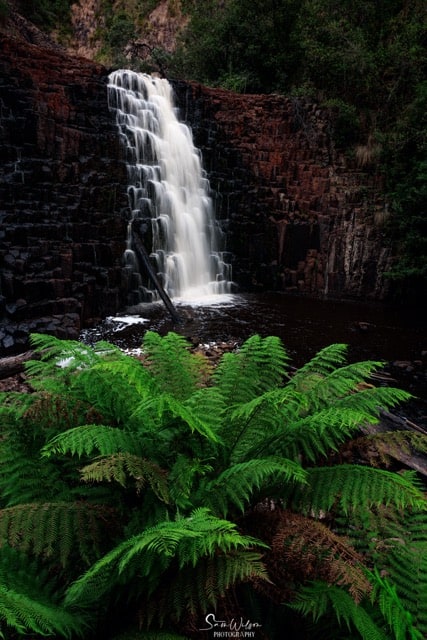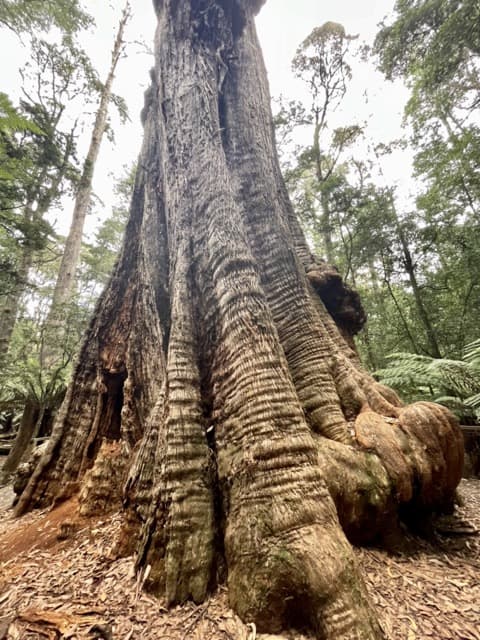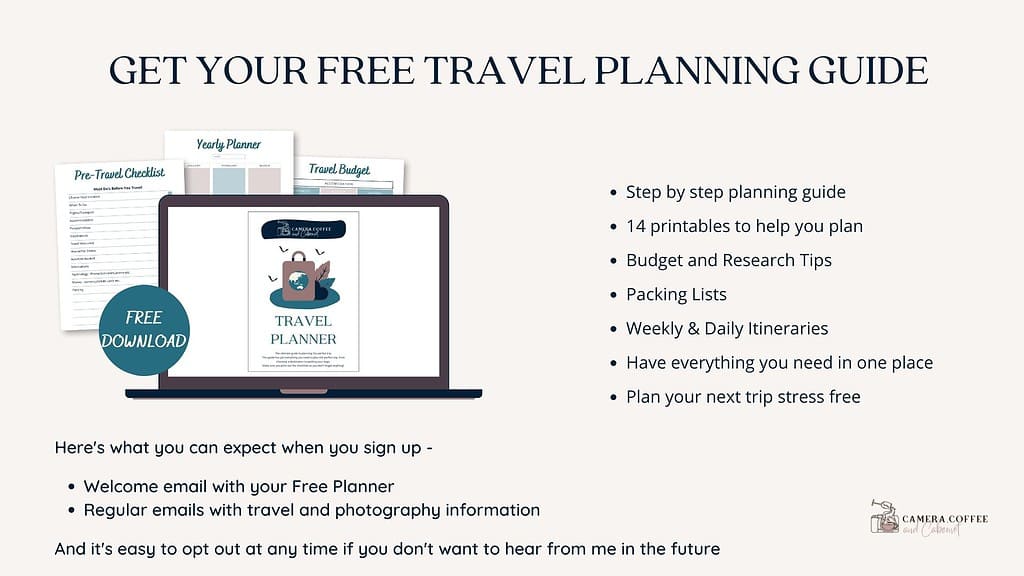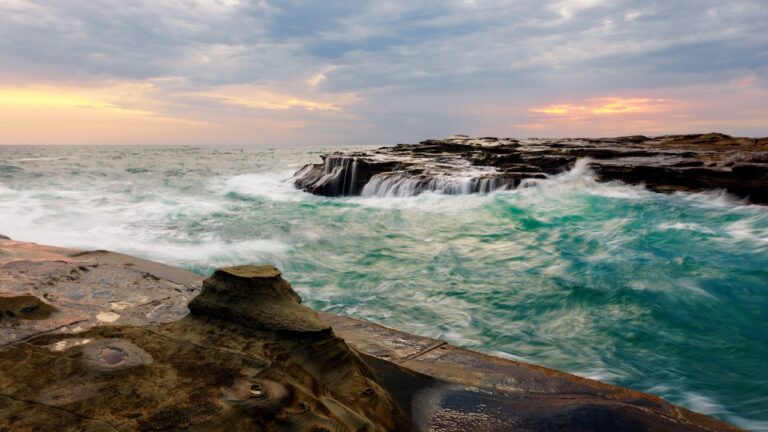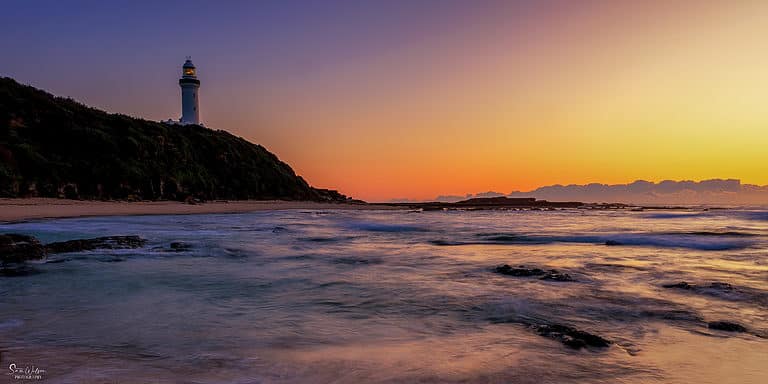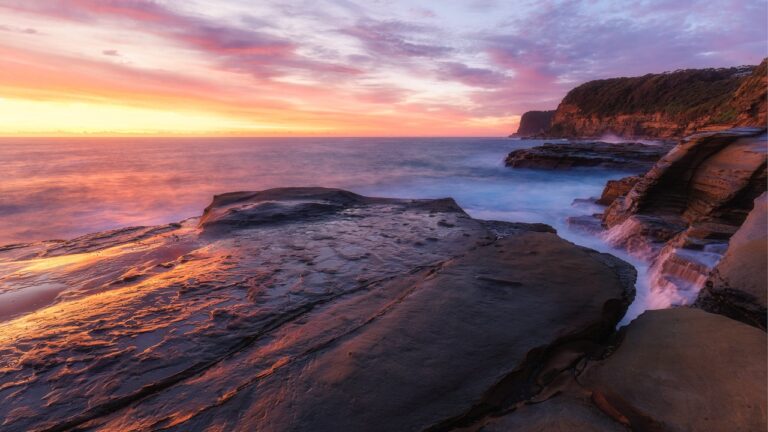Tasmania Photo Road Trip: 10 Days In Tasmania
10 Day Tasmania Road Trip Itinerary For Photographers
This article is all about having the best Tasmania photo road trip so you see as many of the really beautiful landscapes and exciting photo locations.
Tasmania may be the smallest state in Australia, but don’t be fooled into thinking you can see everything in a few days, or even a few months.
From stunning seascapes with incredible lichen covered rocks and clear turquoise waters, incredible mountain landscapes, pristine national parks to wild coastlines and lush rainforests, you won’t be disappointed. I know it’s a cliche but Tasmania really is a photographer’s paradise.
I’ve done three trips down there for photography (so far), and feel like I haven’t even touched the surface.
But, we are all time poor, so here you will find my top photography locations in Tasmania that you should be able to get to in ten days.
You will just have to stay focussed and not be tempted to stay longer – trust me you will be.
“Tasmania is a treasure trove of natural wonders with stunning landscapes, unique animals and plants, and a rich diversity of sea life. Being a compact island, it’s easy to access its many different environments – from alpine ranges, wetlands and grasslands to coastal heaths and vast temperate rainforests.”
~ Our Tasmania Website
It will still leave you wanting more, but you are guaranteed to come home with incredible photos from these locations. And, you’ll have a list (a long one) for when you go back.
Transport Options
To cover all of these locations in your 10 days in Tasmania, you really will need a vehicle.
The easiest way to get to Tasmania is to fly into Hobart, pick up a hire car from the airport and head off on your road trip.
If you want to bring your own vehicle, you can take the Spirit of Tasmania from Geelong in Victoria into Devonport.
Starting and finishing in Hobart this tour will take you up the east coast of Tasmania for the first 5 nights. The next 3 nights will cover the north east wilderness via Bridestowe Lavender Farm. From there it’s Cradle Mountain for 1 night and back to Hobart via Mount Field National Park for your final night.
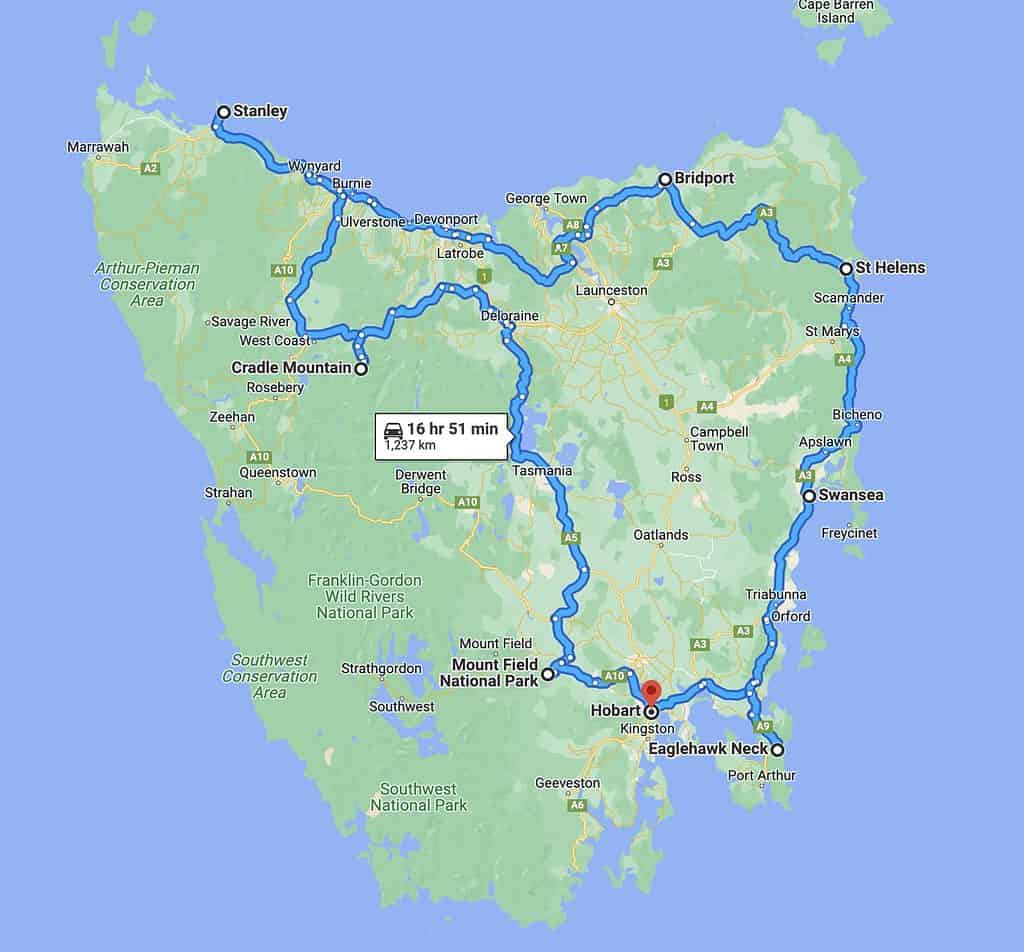
Note – If you came by the Spirit of Tasmania, Then I suggest you head straight up to Stanley and start the tour from there.
Accessing the National Parks
Many of the locations listed here are in national parks and you will need a National Parks Pass. You can buy it here.
I’d recommend a 2 month holiday pass which is $82.50 per vehicle (at the time of writing) for all parks. Entry to Cradle Mountain alone is $25.75 per person.
Let’s get exploring and head off on your amazing Tasmania photography road trip!
Night One – Hobart or Eaglehawk Neck.
Either stay in Hobart for the night, or drive for an hour and stay at the beautiful Eaglehawk Neck ready for sunrise on day two.
I recommend you head straight down to Eaglehawk neck for the night as this will save you that pre-sunrise drive in the morning. I totally prefer that extra sleep!
Depending on when you arrive, it could be preferable for you to stay in Hobart and get up extra early.
If you are staying in Hobart, be sure to do a trip to Mount Wellington for sunset if possible.
Mount Wellington is around 30 minutes from the middle of Hobart and well worth the drive. At almost 1300m above sea level you can get an incredible view. And a fabulous way to kick off your Tasmania photography trip.

Night Two and Three – Swansea
Start with sunrise at the Tessellated Pavement at Eaglehawk Neck.
The TessellatedPavement (best photographed at sunrise) is an absolute must for any photography trip to Tasmania, and for good reason.
The tiled rock ‘pavement’ is an incredible sight. It is believed to have been formed by the rocks being fractured by the earth moving, resulting in what is called ‘jointing’. This is not that uncommon, but the years of salt and constant erosion caused by the sea’s waves have resulted in the unusual and stunning location it is today.
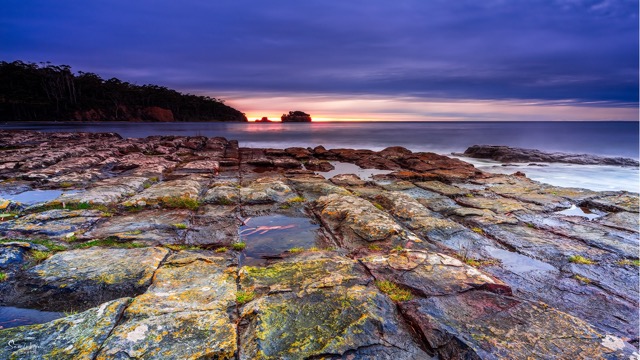
Once you manage to tear yourself away from there, head to a local cafe for that essential caffeine and breakfast.
While you are in the area though, check out Tasman Arch, Devils Kitchen and the blowhole before starting to head to Swansea.
It’s a two hour drive to Swansea, so I recommend you do a detour to Richmond along the way – allow around an hour and a half for this.
Richmond is home to Australia’s oldest stone arch bridge plus some great early colonial style architecture, including some stunning churches.

It’s also a great place to try one of Tasmania’s famous scallop pies if you feel so inclined. Can’t say I loved them, but I can at least say I tried one!
Around 15 minutes before you arrive at Swansea you will see a fabulous fishing hut on the right facing the ocean. This is well worth visiting while you’re staying in Swansea, so make a note to come back here over the next couple of days.
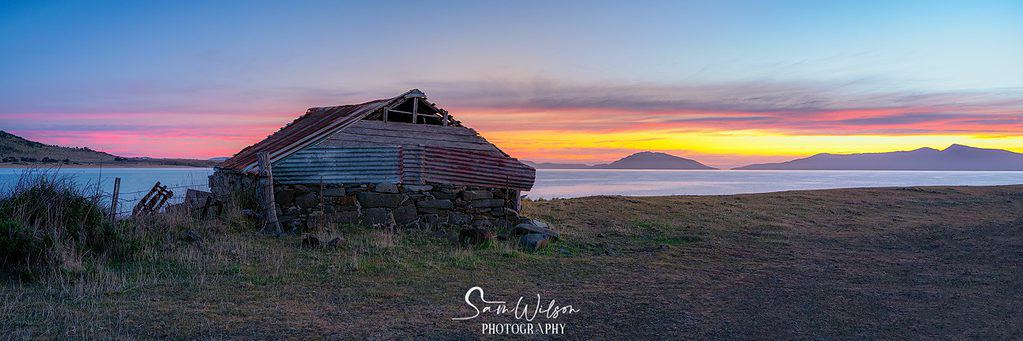
Tasmania, Australia.
Photography Locations While In Swansea
All of these locations are located in Freycinet National Park, so be sure you have already purchased your pass.
Coles Bay
Around 50 minutes from Swansea, this is a great location for both sunrise and sunset. The features here include the beautiful red lichen-covered rocks that the area is famous for, as well as pristine water. If you’re lucky you may even spot some local wildlife.
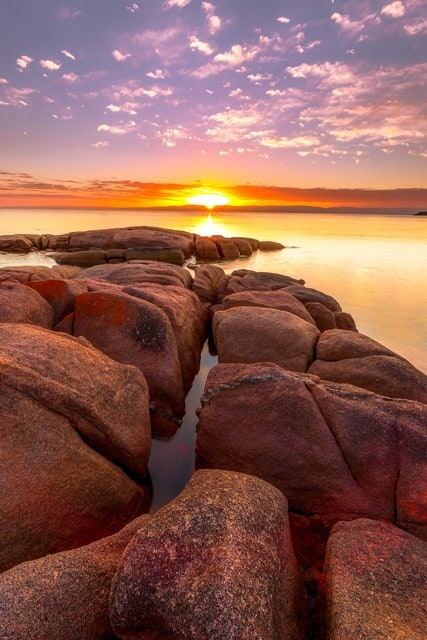
The Hazards
Not far from Coles Bay, are the series of granite peaks in a line known as The Hazards.
This is a fabulous seascape location, and both sunrise and sunset work here.
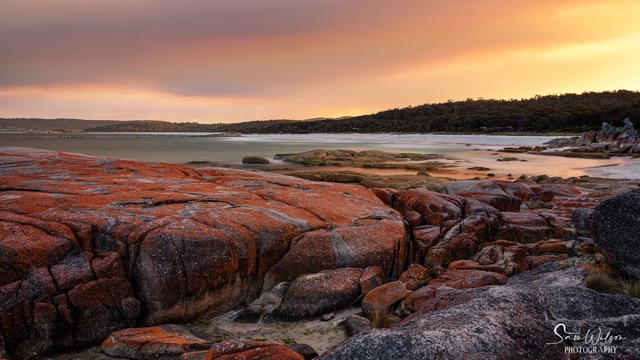
The Nuggets, Cape Tourville
An hour from Swansea (after sunrise at Coles Bay)
This is a lovely spot accessed via a short and gentle 20 minute circuit walk. It’s a great walk,mostly a raised boardwalk, that offers incredible views of the Hazards, Wineglass Bay and these rock formations known as The Nuggets.
This would be a great location to visit outside sunrise or sunset, so it would make sense to visit before or after one of your trips out to either The Hazards or Coles Bay.
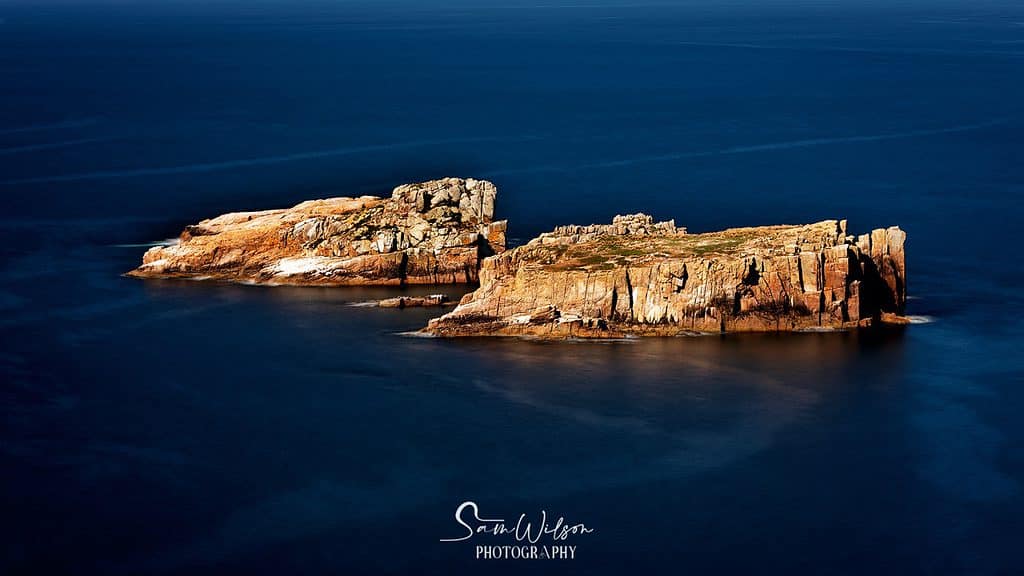
Wineglass Bay
One of the most popular walks in Freycinet is Wineglass Bay, and is a must do. You can do either a short 1.5hour return walk to the lookout, or the more difficult return trek. This will take around 3hours return and includes over 1000 steps down to the beach.
Unfortunately I had a camera malfunction when I visited here so no photos. But trust me, the view and experience is spectacular and is an absolute must do on your Tasmania photography road trip.

Night Four and Five – St Helens
After you’ve soaked up the beauty of Freycinet it’s time to head north up the coast to the Bay of Fires area.
Many think it’s called the Bay of Fires because of the red/orange rocks, but according to Discover Tasmania, this is not the case.
Apparently it was named by an English navigator after he saw fires burning all along the coast that were lit by the Indigenous people living there in 1773.
Your next home for two nights, St Helens, is just under two hours from Swansea. So, after sunrise at either the fishing hut, Coles Bay or The Hazards, it’s time for the essential coffee and breakfast.
Enjoy a leisurely drive and consider stopping at Bicheno to check out the blowhole and coastline along the way.
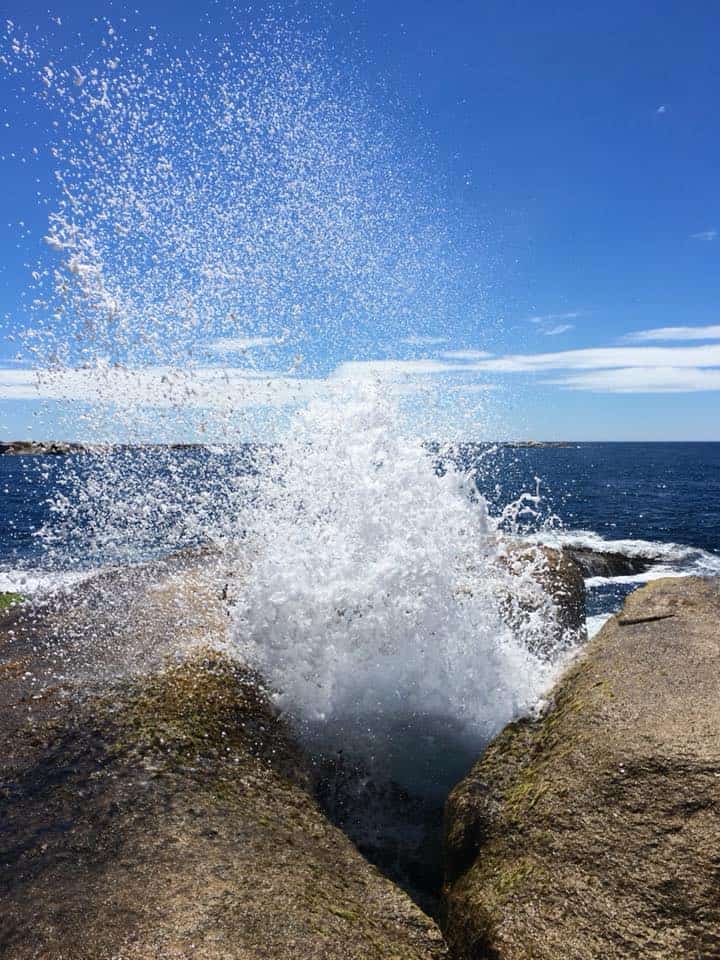
Photography Locations While In St Helens
Images from the Bay of Fires area will flood your screen when you google Tasmania, so it is next on the list for your Tasmania photography road trip.
It’s stunning, and I guarantee you will fall in love with the area. Red and orange lichen-covered rocks combined with white sand and stunning blue waters will hook you in without a doubt.
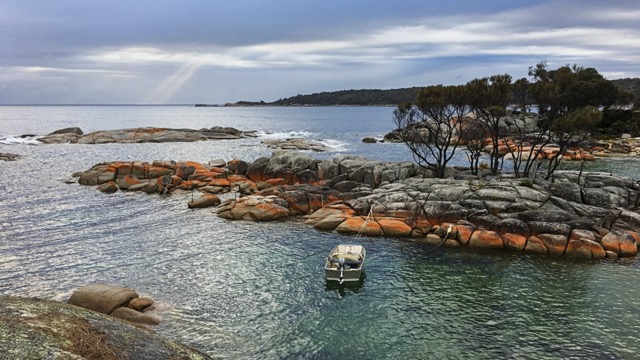
I recommend at least two nights here as the photography options are endless. This will also give you more than just one opportunity to capture amazing sunrise and sunset photos.
Seeing as you are facing east, sunrise really is the best time for your photos, but don’t discount sunset altogether.
Binalong Bay
15 minutes from St Helens
Simply drive along, follow the signs and go looking for some awesome photography spots. You will be surrounded by them.
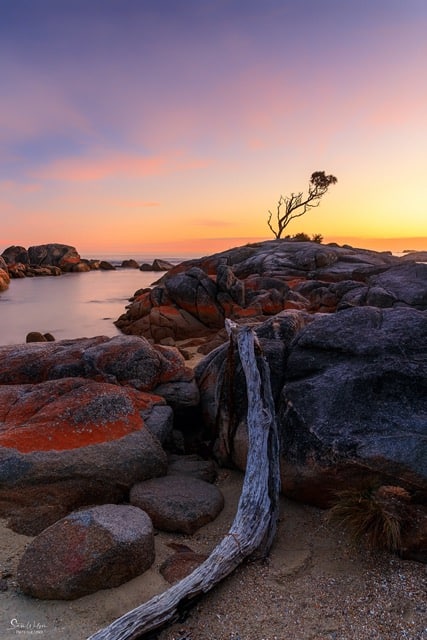
Cosy Corner
15 minutes from St Helens
I do hope you’re not sick of beautiful rock formations, white sand, and incredibly clear water, because that’s exactly what you will find here also.
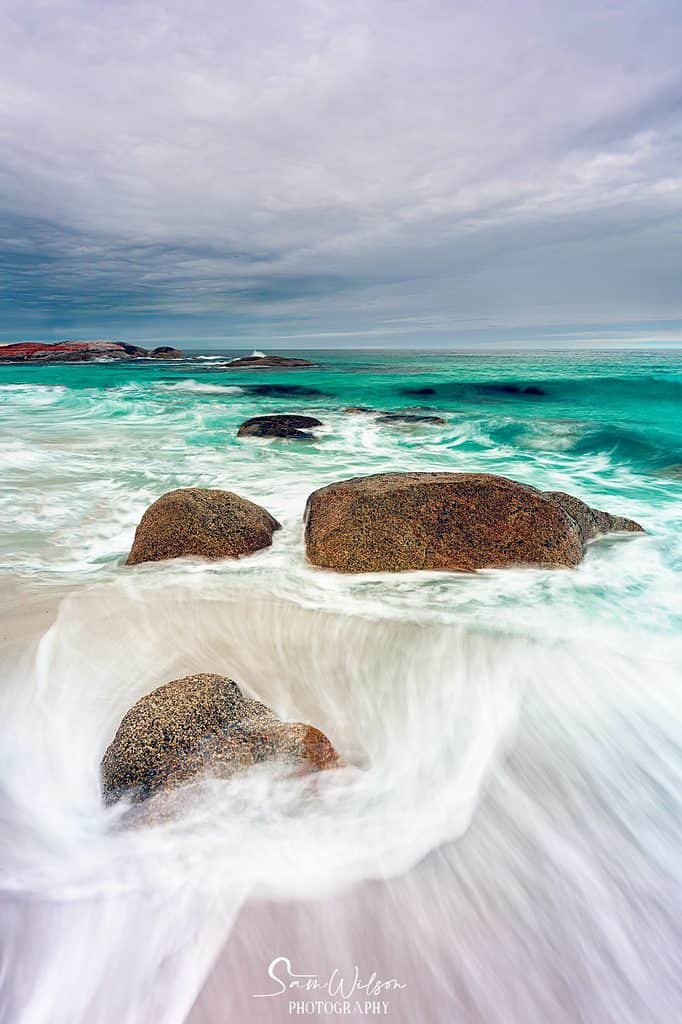
St Helens Jetty
Located right in town
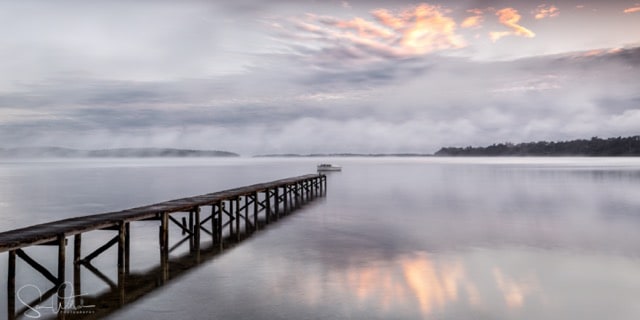
Your stay in St Helens is a great opportunity to relax a bit and take some time out and just enjoy this stunning area.
Eddystone Point Lighthouse
An hour north of St Helens
Ok, so if you’ve had enough relaxing and wigh to head for more sightseeing, Eddystone Point features an incredibly unique lighthouse, along with a lovely picnic area and more stunning coastline.
According to research this is a 35 metre high lighthouse built of granite and beams out 26 nautical miles to guide ships along to avoid the hazards at the entrance to Banks Strait.
When we drove up there for sunset it was absolutely pouring with rain so I’m sad to say I don’t have any photos from here to share.
Night Six – Bridport
It’s time to leave the coast and start heading west. Enjoy sunrise at St Helen’s Jetty and breakfast before heading over to Bridestowe Lavender Farm. It’s less than a two hour drive from St Helens to Bridestowe so this is an easy day.
It’s a beautiful drive through rolling hillsides, and if you’re there at the right time of year you may see poppies in bloom. Late spring and early summer is the best time to see this.
The fields of lavender here are just magnificent, and with the mountains in the background, make a perfect spot for your Tasmania photography trip.
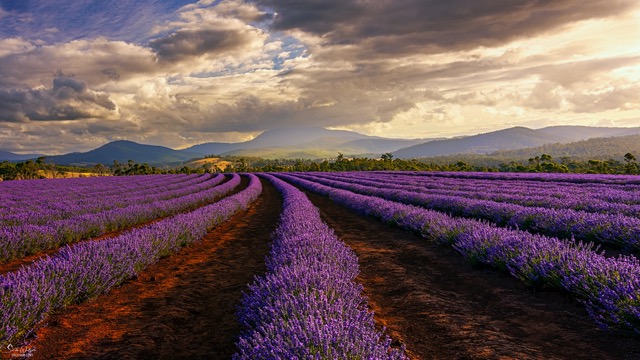
The rows of lavender create stunning leading lines and are just enhanced by the vibrant colours of the lavender. December and January is the peak and if you contact the farm beforehand, you may be able to visit after hours to capture sunrise or sunset.
Note – make sure you also visit during opening hours to check out their gift shop and try their ice cream as well – divine!
Bridport
Once you’ve had your fill of lavender ice cream, (oh and they do latte’s too), head into Bridport where you will be staying for the night.
Fun fact – Streets in the northern half of Bridport have male person names and those in the southern half have female names.
Enjoy an afternoon visiting Bridport Wildflower Reserve is part of Granite Point Conservation Area, where walking tracks lead through the reserve to Adams Beach. The flower reserve boasts one of the best displays of heath flowers in spring.
An early night is in order so you can capture sunrise at the old jetty before heading to the wilderness of the Northwest.

Night Seven and Eight – Stanley
After sunrise, and of course coffee, you’ve got a three and a half hour drive to Stanley.
But, you need to add an extra hour to that so you can detour to Dip Falls and the Big Tree on the way.
You’ll know when you get to Stanley when you see the massive rock formation right on the ocean. That is the Nut, and no, I’m not calling you names lol.
The Nut – Stanley
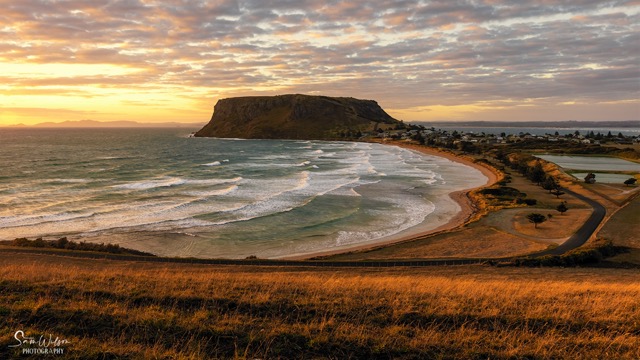
“The Nut was first called Circular Head when it was discovered by Bass & Flinders in 1798. The region that surrounds the Nut has since been called Circular Head. It depends who you talk to on the origin of the name the Nut. Some say it is a shortened version of the Aboriginal name for it which was Moo-Nut-Re-Ker. Some also say the name came from when the breakwater was built in 1892. The side of the Nut was packed with explosives to construct the breakwater, once detonated nothing happened and no rocks fell from the side of the Nut. Apparently most of the crowd that gathered to watch the event, agreed that is was a “Hard Nut to Crack”. – Info courtesy of https://stanleyandtarkine.com.au/
The remote wilderness of North West Tasmania is a photographic dream. From ancient rainforests of the Tarkine to wild coastline, this is a totally different landscape for you to fall in love with.
Gone are the gentle white sands with turquoise waters, you are now truly in another world.
It is really difficult to adequately describe this incredible area – think rainforests, but then add the most rugged and wild coastline’s I have ever seen – it has gorgeous mossy, fern-filled walks, giant trees, waterfalls, wild beaches – and you barely see another soul!
For the full rundown on this area and the wonderful photo opportunities, head on over to my post covering the area of Northwest Tasmania.
The Edge Of The World
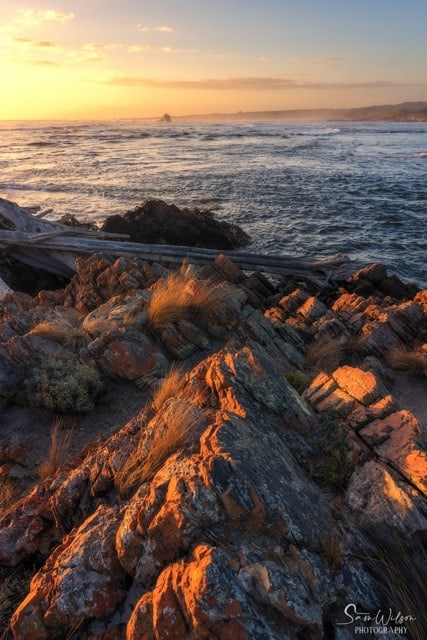
Two nights here will not be anywhere near enough, but check out that article and make sure you at least visit the following locations –
- The Nut (right in Stanley)
- Trowutta Arch (40 minutes from Stanley)
- Lake Chisolm (40 minutes from Stanley)
- The Edge Of The World (1 hour from Stanley)
Get an early night for your last stay here as you want to head out super early to head to Cradle Mountain.
Night Nine – Cradle Mountain
While this may only be a two hour drive from Stanley, you will want to leave super early to have as much time at Cradle Mountain as possible.
When it comes to iconic Tasmania photography locations, Cradle Mountain is totally up there. If you haven’t been to Cradle Mountain, have you really been on a Tasmania photo road trip?
Once again you’re in a National Park, Lake St Clair to be exact, so make use of that pass you have.
This is a heritage listed area, so vehicles are not permitted beyond the visitor centre outside of daylight hours. Check out the full hours and details here.
You will need to park at the visitor centre and catch the shuttle bus to and from Dove Lake, which is your location for the day.
Dove Lake
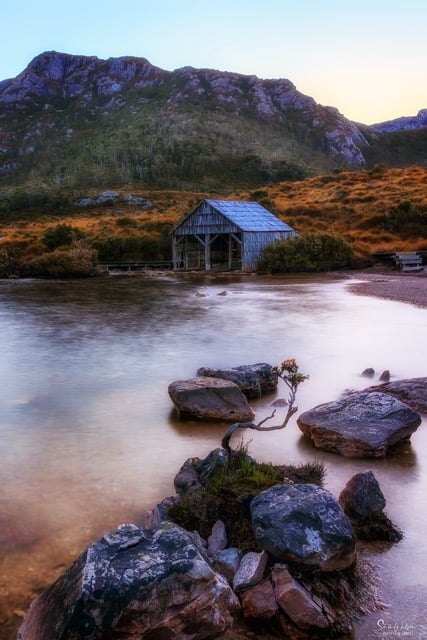
There are numerous walks in the area, anything from the Dove Lake circuit to tracks like the Overland Track that take up to a week or more.
Today the Dove Lake Circuit is the goal and is a perfect introduction to the area. It is a 6km walk that will take around two to three hours plus photography time.
If you also love hiking, and have extra time, I suggest building in an extra day or two to explore more of the walks around Lake St Clair. The weather can also be incredibly diverse here, so consider at least one extra night if you can.
Back to the Dove Lake Circuit – this walk traverses around this lovely lake and includes not only the often photographed boatshed, but lush forests and continuous views of Cradle Mountain as you go around.
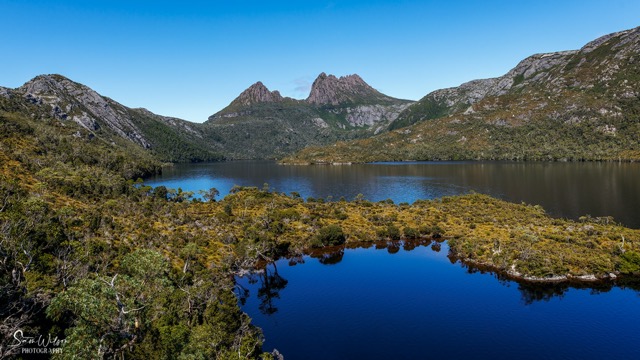
Don’t rush the experience, and make sure you hang around until the end of the day before retiring for a wine in your accommodation. This is the most likely time for you to see some of the local wildlife including wombats and echidnas.
Night Ten – Hobart
Today is the longest drive between locations, so you could skip sunrise and have a later start, BUT golden hour over Cradle Mountain could just end up being the pinnacle of your Tasmania photography road trip.
The plan for today is to head to Mount Field National Park to photograph both Horseshoe and Russell Falls before finishing up in Hobart.
Be sure to stop off at Sheffield along the way. Great cafes and impressive murals. Also if you haven’t bought your obligatory souvenirs yet, then Sheffield is your town.
Mount Field National Park
From Mount Field National Park
“A park for all seasons with towering trees, waterfalls and alpine tarns. Mount Field is one of Tasmania’s oldest and most loved national parks. Here you’ll find Tasmania’s favourite waterfall – Russell Falls, spectacular glaciated landscapes, some of the world’s tallest eucalypt forests, and a network of excellent walking tracks. During autumn Tarn Shelf becomes a riot of colour as the deciduous beech changes colour. This park is part of the magnificent Tasmanian Wilderness World Heritage Area.
There’s a fabulous visitor centre full of information, toilets and a great cafe where I recommend you have lunch. After your walk to Russell and Horseshoe Falls though …
There are many beautiful photography spots here in Mount Field but the two listed below are easy to access and a lovely relaxing way to end your trip.
Russell Falls
This is a really easy and accessible walk. It is rated a grade 1 and is even suitable for someone in a wheelchair with minimal assistance.
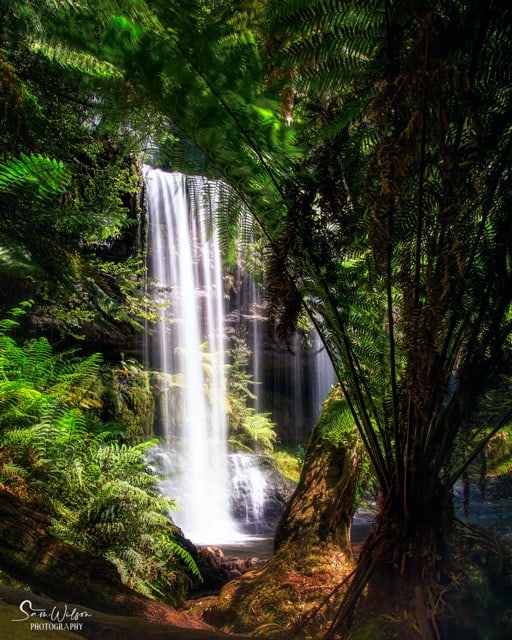
Horseshoe Falls
A further 10 minutes past Russell Falls (with some steep sections and stairs), you will arrive at the also beautiful Horseshoe Falls.
I’d allow at least an hour for both – not for the walking, but for the photography. It’s not just the waterfalls, you will enjoy walking through the rainforest filled with ferns and majestic trees as well.
Meander back to the visitor centre and treat yourself to lunch and coffee. Although they do also sell beer and wine if you’re so inclined. No judgement here.
Just over an hour’s drive will see you back in Hobart and the end of your Tasmania photography tour. Don’t be sad as you should have loads of memory cards full of stunning images to edit over the next few months!
I suggest you stay somewhere near the harbour so you can have a relaxing dinner to finish up and enjoy the beautiful view and vibe of Hobart.

And that’s it, your Tasmania photo road trip is now complete – I’m sure you’ve had a fabulous time and have lots of beautiful photos on your memory cards!
If you happen to arrive back in Hobart on a Friday afternoon, be sure to visit the famous Salamanca Markets on the Saturday before heading off to the airport –
Driving Distances Between Locations
These are approximate driving times to help you plan your days –
Hobart -> Eaglehawk Neck – 1hr
Eaglehawk Neck -> Swansea – 2hrs
Swansea -> St Helens – 2hrs
St Helens -> Bridport – 2hrs
Bridport -> Stanley – 3.25hrs. Add 1hr to visit Dip Falls along the way.
Stanley -> Cradle Mountain – 2hrs
Cradle Mountain -> Hobart – 4hrs. Add 1.5hrs to visit Horseshoe and Russell Falls along the way.
Have Extra Time?
If you have more than 10 days in Tasmania then I thoroughly recommend you look into the following:
- Port Arthur – once a convict settlement, this is an interesting day trip well worth a visit
- Bruny Island – check out Pennicott Wilderness Tours for a day trip here
- Queenstown
- Maria Island
I truly hope you’ve found this guide for your Tasmania photo road trip useful.
I’d love to hear of your adventures so please let me know in the comments below.
I’d love to hear of your adventures so please let me know in the comments below.
That’s it for now – Keep clicking and stay caffeinated
Like this post? PIN it so you can save it for later
Here’s some more articles and resources I think you’ll like:
- Photographing the Northwest Tasmania Wilderness
- Tasmania Photo Locations: 25 Must-Go Spots For Great Photos
- Planning your Photography Shoots
- Photography Road Trip Tips
- Essential Landscape Photography Gear
- Packing For Your Next Photography Trip: How To Decide What To Take
Don’t miss a post – sign up Here if you haven’t already
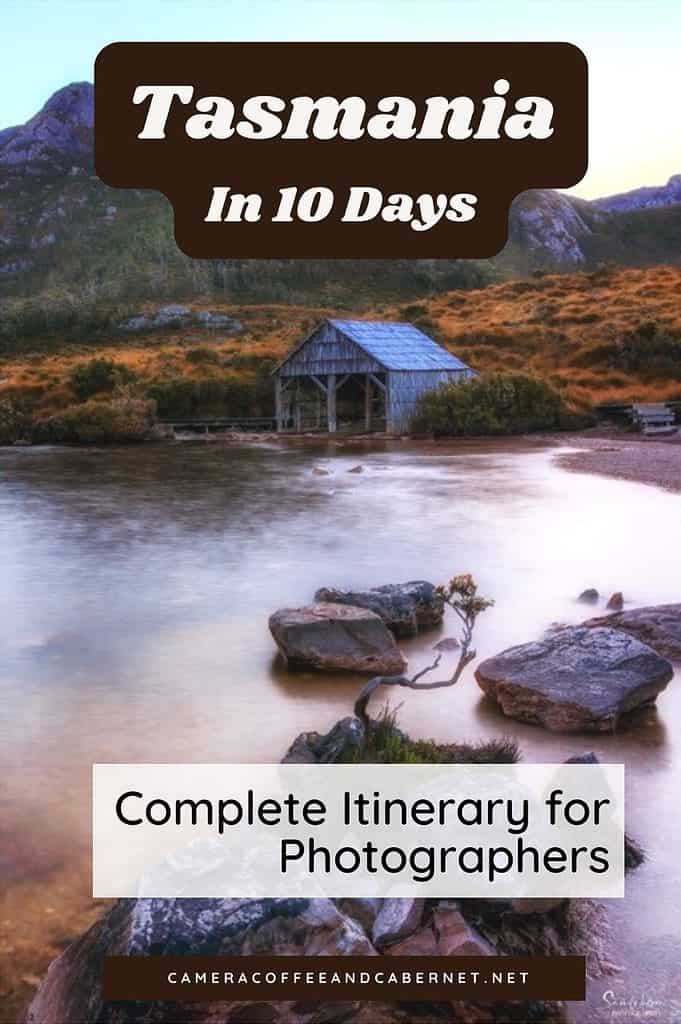
Note – This post does not contain any sponsored or affiliated links. All suggestions and opinions are mine. Unless otherwise stated, all photos are mine and remain my copyright images – Sam Wilson Photography.



